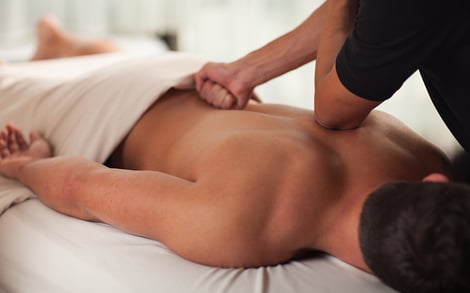by Vincent Lee, Rolfing Wellness, Singapore

Back pain happens to most of us at a certain point in our lives, be it for a short or long period of time. As many Singaporeans know all too well the medical community is poor at diagnosing and permanently treating low back pain. They invariably end up prescribing drugs to gloss over the cracks and don't get to the heart of the problem. How often do we stop to actually consider how, or what, is the cause of our back pain? More importantly how often do we consider whether the area of pain is actually the origin of the pain? In this article we look at the causes of back pain for many Singaporeans, how Rolfing can help and the little known but extremely physiological role the fascia plays in the body.
The word connective tissue or fascia is not commonly known to most people. Dr. Ida Rolf, a biochemist in the 1930s discovered the importance of the fascia throughout our body. The fascia, intertwined within our muscles and even within our organs, is one of the most neglected anatomical parts within our body. In fact, its universal connectivity throughout the body is often ignored by both the traditional medical community and alternative therapists. And yet our daily movements and even gravity itself, play a fundamental role in how the fascia functions and how it in turns affects our entire body's movement, posture and imbalances.

Fascia which comes in superficial and deep fascia layer lies entwined within our muscles and organs. Dr. Ida Rolf, who invented rolfing in the 1940s, first discovered that when we subject our fascia to a certain amount of pressure, we'll eventually permanently physically reorganise the fascia to respond to that pressure. She started developing a sequence known as Rolfing, or Structual Integration, that requires a practitioner to work on different parts of a person's body so as to bring about better structural alignment in the body.
But what about our back pain? Very often, back pain is due to densification of the fascia over a period of months, years, or even decades from repetitive use in poorly aligned positions such as sitting at a computer all day with hunched shoulders and a forward head posture. In Rolfing, the body is viewed as a interconnected highway. Think of an ice skater who makes her spin round the skating ring. If any part of her body is overly tight, it will definitely affect her spinning ability.

In Rolfing, we often uncover many tense areas of the body that are also responsible for the symptoms of pain we face in a particular area. These tense areas, also known as densified fascia, can cause restrictions in the elasticity of our muscles. Very often, we do not feel these tight areas until a Rolfer comes and works on these densified knots to release the pressure.
Due to the whole body connectivity of the fascia low back pain can arise from tight areas from our hips and even our hamstrings and calf. In Rolfing, we also assess what are the movements that give rise to the sensation of back pain. For someone it can be walking down the stairs, and for another, it can be climbing up the stairs. Do not be surprised that back pain can come about if someone is trying to do a simple yoga pose! We are all unique individuals and what works for someone might compound problems in another.
Back pain can also arise from an imbalance in our feet, knock knees and even scoliosis. Rolfing addresses back pain from a multifactorial approach as it looks at the fascia which consequently, provides a different perspective in helping reduce back pain. So next time you have back pain have a think about this question "Is there anywhere else this sensation may have risen from?"
Vincent Lee is a full time practicing Rolfer for 15 years. He has tied up with Levitise to raise the awareness of holistic wellness in Singapore. Feel free to contact us to find out more about Rolfing and how it can be combined with Holistic Lifestyle Coaching for permanently better health and a life free of back pain.
To your health, happiness and longevity,
The Levitise Team
P.S. If you love this blog post then do check out our fortnightly newsletter where you'll get the freshest content on health, nutrition and fitness delivered straight to your inbox. Don't miss out and sign up here with just your name and email.

Write a comment